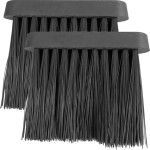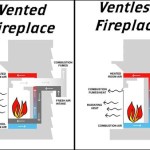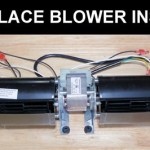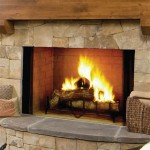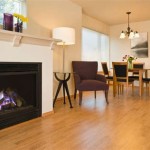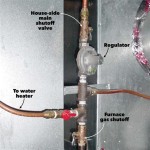Built-In Wall Gas Fireplaces: A Guide to Modern Heating and Aesthetics
Built-in wall gas fireplaces are a popular choice for homeowners seeking a combination of efficient heating and sophisticated design. These fireplaces offer a seamless integration into the wall, creating a focal point that enhances the ambiance of any room. Unlike traditional wood-burning fireplaces, gas fireplaces offer convenience, consistent heat output, and cleaner operation. This article explores the key aspects of built-in wall gas fireplaces, covering their benefits, installation considerations, and available features.
Advantages of Built-In Wall Gas Fireplaces
Built-in wall gas fireplaces present several compelling advantages over other heating options. One of the most significant is their ease of use. Unlike wood-burning fireplaces that require manual loading and tending, gas fireplaces ignite with the flip of a switch or the press of a button. Many models also offer remote control functionality, allowing for effortless temperature adjustment from the comfort of a couch or armchair. This convenience is particularly appealing to homeowners seeking a hassle-free heating solution.
Another key benefit is the consistent and adjustable heat output. Gas fireplaces provide a reliable and controllable source of warmth, allowing homeowners to maintain a comfortable temperature throughout their living spaces. Modern models often feature thermostatic controls, enabling precise temperature settings and energy-efficient operation. This level of control is difficult to achieve with traditional wood-burning fireplaces, where heat output can fluctuate significantly.
Furthermore, built-in wall gas fireplaces offer superior air quality compared to their wood-burning counterparts. Gas fireplaces produce significantly fewer emissions, reducing the risk of indoor air pollution and eliminating the need for chimney cleaning. This makes them a healthier and more environmentally friendly option for heating homes. Additionally, the sealed combustion systems in many models prevent drafts and heat loss, further enhancing energy efficiency.
Installation Considerations for Built-In Wall Gas Fireplaces
Proper installation is crucial for the safe and efficient operation of a built-in wall gas fireplace. Installation typically involves modifying the existing wall structure to accommodate the fireplace unit and its venting system. Due to the complexity of the process, it is highly recommended to hire a qualified professional to perform the installation. A licensed gas fitter will ensure that all local building codes and safety regulations are met.
One of the primary considerations is the venting system. Gas fireplaces require proper venting to exhaust combustion gases safely outdoors. There are two main types of venting systems: direct vent and vent-free. Direct vent fireplaces draw air from outside for combustion and expel exhaust gases directly outdoors through a sealed vent pipe. This type of venting is considered the safest and most efficient option. Vent-free fireplaces, on the other hand, do not require venting and release combustion gases directly into the room. While vent-free models can be easier to install, they may not be suitable for all homes due to potential indoor air quality concerns. Local building codes often restrict or prohibit the installation of vent-free fireplaces, making direct vent models the preferred choice.
Another significant consideration is the gas line connection. A qualified plumber or gas fitter must connect the fireplace to the gas supply line, ensuring proper pressure and leak-free connections. The gas line must be sized appropriately to meet the fireplace's BTU requirements, and all connections must be tested for leaks before the fireplace is put into operation.
Features and Design Options for Built-In Wall Gas Fireplaces
Built-in wall gas fireplaces are available in a wide range of styles and designs, allowing homeowners to customize their fireplaces to match their individual preferences and décor. From sleek, modern designs to more traditional styles, there are options to suit virtually any aesthetic. The firebox can be customized with various media options, such as ceramic logs, glass beads, or river rocks, creating a unique and visually appealing flame display.
Many models also offer advanced features, such as programmable thermostats, remote controls, and electronic ignition systems. Programmable thermostats allow homeowners to set specific temperature schedules, ensuring optimal comfort and energy savings. Remote controls provide convenient control over the fireplace from anywhere in the room. Electronic ignition systems eliminate the need for pilot lights, further enhancing energy efficiency and safety.
In addition to the firebox and media options, the surrounding wall can also be customized to create a cohesive and visually striking design. Options include tile, stone, wood, or metal cladding, allowing homeowners to integrate the fireplace seamlessly into their existing décor. The surrounding mantel can be used to display decorative items or provide additional storage space. The design possibilities are virtually endless, allowing homeowners to create a truly unique and personalized fireplace.

Hole In The Wall Installation Guide Direct Fireplaces

Gas Fireplaces Fireplace Xtrordinair Made In America

How To For A Gas Fireplace Fireplaces Direct Learning Center

How To Operate A Gas Fireplace

Verto 1200 Vent Free Gas Fireplace South S Best Ing

7 Fireplace Surround Ideas That Will Ignite The Room

Fireplaces Recessed In Wall Modern Blaze

ᑕ❶ᑐ How Much Do Fireplace Built Ins Cost Get The Guide

Studio Edge Gas Fires Gazco Built In Contemporary Fireplaces

Our Guide To Wall Mounted Fires Installation Direct Fireplaces
Related Posts

